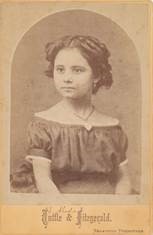By Ryanne Slagiel
As an attendee of CI, the only history we often consider here is that of the previous Camarillo State Hospital that used to run out of the walls of our old buildings. But before the hospital, there was a rich history of a Rancho—Rancho Guadalasca, to be specific. Buildings from this era have been found here right near campus, a testament to the living, rich history of the land we are on. From Aug. 21 – Dec. 15, students and faculty alike can honor and learn about this history through an exhibit in the museum space on the second floor of the John Spoor Broome Library.
Anthropology professor Collen Delaney, the woman behind the exhibit, fell into a rabbit hole after both a research project on the Chumash people of the land we inhabit as well as the discovery of a building here near campus after the 2013 spring wildfires.
“It was up on the hillside, not close to fresh water. It didn’t seem like it’d be a good place for work activities,” Delaney said. “I think the structure was built to, maybe, be some type of work building associated with [a] quarry.” She added, “But we don’t know for sure!”
Delaney shared the importance of contextualizing archaeological findings in history, something that was a struggle in dating the building she and her team of students found. “We need to know where [an artifact is] found and what it’s found with,” she said. “It’s okay to look at things, pick them up, take a picture, but put it back where you found it, because if it’s removed then we could lose information.” She stressed this especially if you find things on your own—anything you find could reveal important historical information to archaeologists.
Due to the removal of items, some of this imperative context has been lost, and thus the building cannot be accurately traced. The slogan “Leave no trace and leave in place” features on a brochure from the exhibit; a sentiment we can all stand to remember.
While the exact history of that particular structure may be a bit of a jumble—with children’s toys, campfire lanterns and glass all dating at different points—we can, with more certainty, investigate the people who used to live in and around Rancho Guadalasca.

People like Ysabel Yorba, who ran the ranch for 35 years as a widow, and Margaret Chung, who was the first female Chinese physician in America, are important to remember. They give us a glimpse of some of the people who have come out of our history. It is important to see these people not as fictionalized figureheads—but as just that: people. Remembering history, especially on the local level, allows us to remember that we are not alone in who we are and what we are doing—someone is doing it or has done it with us.
The story of Rancho Guadalasca begs us to remember that history is not just what you read about in textbooks. “I just want people to appreciate the diversity of people, events, and activities here—in Ventura County,” Delaney closed, “Rancho Guadalasca really is a microcosm for everything that happened in Ventura County. History has happened here.” Not only that—but history can happen here, and is happening, currently. It is our jobs to remember and preserve that history!
The Rancho Guadalasca main exhibit will run from Aug. 21-Dec. 15, 2023. There will also be four smaller exhibits, the schedule of which is listed below.
Farming and Families: Aug. 21-Oct.14
The Mugu Lagoon: Aug. 21- Oct. 14
Diversity & Multiculturalism: Oct. 16- Dec. 15
Camarillo State Hospital: Oct. 16-Dec. 15

